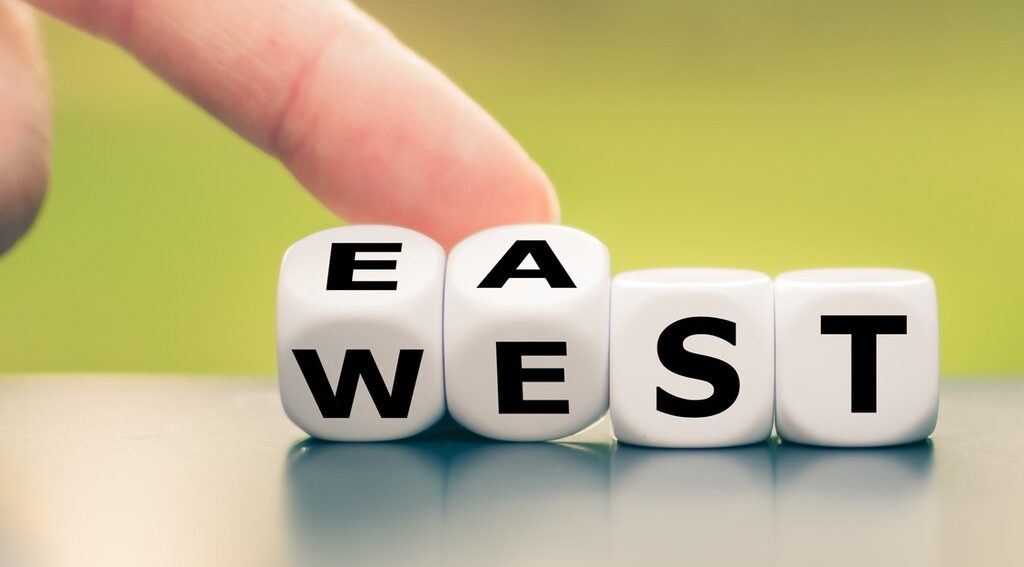Comparison of Product Development Models and Risks
In this article you will learn about the tradeoffs between funding your own product development (Western model) and partnering early with a Chinese manufacturer to develop your product (Eastern model).

You have started to design a new hardware product. To achieve a lower production unit cost, you may be designing it for manufacturing in China.
Before you talk with anybody in Asia, you need to be aware of something. People in China who will help you design and develop your product may work just like you’d expect. Or, they might think very differently about the working relationship.
We’ll call these differing viewpoints the “Western model” and the “Eastern model.” The assumptions and expectations about the business relationship may not always be clear depending on your specific culture.
One is not necessarily better than the other, and they are a good fit for different types of projects.
Here is a graphical comparison:
Why Startups Choose The Eastern Model
Well-funded and experienced teams tend to raise money and finance their own projects. They tend to go for the “Western model.”
However, many hardware startups that end up manufacturing in China follow the “Eastern model.” And that is not surprising if one considers their situation.
Here are 4 reasons why businesses choose the Eastern Model:
- Limited funds. Finding a Chinese supplier that already makes the same type of product and convincing them to “partner up” can be much easier and faster than finding investors, especially if you don’t yet have a prototype and you haven’t done any market research.Engineering design work and the sourcing and vetting of component suppliers is not billed at all, or is heavily discounted. There is no need to pay full price for the tooling. That’s very, very appealing.
- Lack of understanding of long-term risks. Not owning all the intellectual property and being unable to switch from a bad supplier are serious issues that can kill a project.However, they are often overlooked. When money is tight and the founder(s) don’t talk to investors or lawyers, they may not fully understand the potential long term risks associated with the Eastern model.
- Focus on the wrong things. For example, the founders might talk to a lawyer and end up spending all their money on patent applications, believing that it will be the best protection against project-killing events (and it’s usually not).Or they might believe that China will be a major market, and having a local “partner” in the country, who also does the manufacturing, will be a major asset to open the market (that’s seldom true).
- The ease of getting started on the wrong foot. Many Chinese companies are very good at impressing an inexperienced customer and winning their trust.
Downside of the “Eastern Model”
This model is not compatible with the expectations of most Western investors, who want to ensure IP ownership is clean. Once you find out about that mistake and you go back to the Chinese party, it’s too late.
They will not usually sign legal agreements that recognize you own all the IP rights. Once you have gone down that path, changing direction can be very difficult.
Now, let me clarify again, the “Eastern model” is not always the wrong path. It may be a great fit if you don’t need to have full control over your project.
Some manufacturers have done a nice job under that model, especially with relatively simple products (when the development is over within 3 months and there are no serious obstacles).
Business Mindset
The Eastern model is a simple way of describing the approach of most Chinese OEM and ODM manufacturers (and of some Western-owned companies, too).
There are many parallels to the Western business world.
If you engage in merger & acquisition activities, for certain activities you have a choice between engaging lawyers (paid by the hour, no matter what the outcome) or investment bankers (paid a commission, if the deal goes through). They come with some of the same implications.
Here is another example. You may hesitate between hiring an engineer as a contractor vs. persuading him/her to join as a co-founder.
As always, there is a third way. Let’s take the latter example. You can start by paying him/her as a consultant. In the process, you gauge how well the two of you work together.
Once a prototype is available, you do further market research and hopefully you raise some funding from an investor.
Since your company now has a valuation, the business risk is lower, and the amount of work for the rest of the project is considerably clearer. You can now make an offer and get the consultant to be a co-founder instead.
The key is, it is easier and less risky to start with an arm-length transactional relationship and to get closer over time. Doing the reverse doesn’t work well.
When developing your project, the same logic applies.
Simplify your product concept, finance some engineering work from your own pocket at the start, work on removing risk systematically, and attract some investment or raise crowdfunding.
Once you have all those hallmarks of a successful project, you are in a better position to negotiate good terms with manufacturers.
If your project requires custom electronic and mechanical design work, and you can’t get into a position where you finance it all, look for ways to take on the tasks one at a time, in a logical sequence.
Hacking a rough prototype together based on an Arduino module may be an inexpensive way to test the market and to demonstrate some market traction.
Keeping full control of the electronic side may need to be your priority, and you may need to “partner up” with a plastic supplier that will subsidise the cost of your molds. It doesn’t have to be 100% one or the other.
Conclusion
Do not rush to work with a company in China. As the founder, you need to make progress on certain milestones first – including market research and early product mockups.
You also need to develop a plan for development, transitioning to manufacturing, mass production, and distribution.
As part of that plan, you need to decide if Chinese manufacturing makes sense for your project, you need to pick one of the 2 approaches I laid out above, and you have to ensure you sign the right legal agreements.
It can feel overwhelming, and it takes patience. With good planning and by working with the right people, you will avoid any unpleasant surprises down the road.



And, for those who join the Hardware Academy, there is a course on the ways to build a low-risk supply chain in China. It touches on some of the same topics.
And, of course, there are a number of other courses on a variety of topics of interest to hardware startups.
Thank you for highlighting the key differences in working with a Chinese supplier.